

How to Select a Marine VHF Antenna: Expert Guide
Selecting a suitable marine VHF antenna is crucial for boat owners relying on VHF radio for communication and safety.
A well-chosen antenna can significantly improve radio transmission and reception, ensuring clear communication over longer distances.
Factors such as antenna height, gain (measured in decibels), and materials play essential roles in determining the performance of a marine VHF antenna.
Understanding the key features of these antennas is vital to making an informed decision, as is considering how the antenna will be installed on your boat.
Additionally, being aware of VHF radio transmission and reception principles helps choose the right marine electronics for optimal performance.
Key Takeaways
1️⃣ Selecting a suitable marine VHF antenna is crucial for effective VHF communication and safety on the water.
2️⃣ Antenna height, gain, and materials are important factors to consider when choosing the correct antenna for your boat.
3️⃣ Understanding VHF radio transmission principles and installation considerations aids in selecting the appropriate marine electronics.
🔑 Key Features of A Marine VHF Antenna
Choosing antenna material.
Marine VHF antennas are commonly made from fiberglass, brass and copper, or stainless steel.
Fiberglass antennas offer durability and long-lasting performance in harsh marine environments.
Brass and copper antennas, on the other hand, are known for their excellent radiator properties and efficient signal transmission.
Stainless steel antennas are valued for their strength and corrosion resistance.
To learn more about different types of marine VHF antennas , consider exploring various options available on the market.
Considerations for Gain and Height
A key factor when selecting a marine VHF antenna is the antenna gain, which is usually provided in a dB rating.
Gain refers to the ratio of output power to input power in decibels (dB). A higher dB rating represents a stronger signal transmission.
Antenna height also plays a crucial role in achieving better signal reception.
Generally, the taller the antenna, the greater the range, with heights varying from a few inches to over 20 feet.
Remember that taller antennas typically offer higher gains, so a balance between height and dB rating is crucial to choose an antenna that suits your needs.
Mounting Options
Mounting options for marine VHF antennas depend on various factors, including the boat’s configuration and available space.
Standard options include base mounts, which secure the antenna to the boat’s surface or structure, and rail mounts, which allow for attachment to railing systems.
Another possibility is a quick-release mount. So you can easily attach or detach the antenna from the boat.
🎓 Pro Tip: You should also consider where to mount the VHF antenna , as it will help maintain its effectiveness.
🪛 Considerations for Installation
Finding the ideal location.
The ideal location for installing your marine VHF antenna is crucial for optimal performance.
You should consider factors such as rigging tubes, low bridges, and the importance of antenna height, which will ensure that your VHF has the best possible range and signal clarity.
Higher locations generally offer a better range, but you must balance this with any potential interference from surrounding structures or obstacles.
Installation Techniques
The most common techniques include mast mounting, surface mounting, and rail mounting.
Mast mounting: This is typically used for sailboats and involves attaching the antenna to the masthead. This type should offer minimal windage and a wide radiation pattern, as required by a heeling sailboat.
Surface mounting: is a popular option on powerboats and involves attaching the antenna to a flat surface on the boat. They should provide a stable and durable platform for the antenna.
Rail mounting: provides a versatile option, allowing the antenna to be attached to a rail on the boat. This can be particularly useful for boats with limited space or specific mounting requirements.
When considering rail mounting, it’s important to select a mount that securely grips the rail while allowing the antenna to be easily adjusted for optimal performance.
Significance of Cable and Connectors
Just as important as the antenna itself, the quality of the cable and connectors used in the installation can significantly impact your VHF system’s performance.
High-quality components will help minimize signal loss, ensuring optimal performance over longer distances.
It’s also important to ensure all connections are properly sealed to prevent moisture ingress and corrosion, particularly in the harsh marine environment.
Follow these factors during the installation process, and you’ll be well on your way to enjoying clear and reliable communication with your marine VHF radio system.
📻 Understanding VHF Radio Transmission and Reception
Importance of line of sight.
VHF radio transmission relies heavily on line of sight for successful communication.
Since VHF radio waves travel mainly in straight lines, any obstructions, such as hills or buildings, can significantly affect the signal quality and range.
In marine environments, the curvature of the Earth and varying boat heights also play a role in determining the overall range of VHF radio communication .
A clear line of sight between the transmitter and receiver is essential for optimal reception.
Dealing with Signal Strength and Frequencies
Signal strength is a crucial factor in VHF radio communication because it impacts clear and reliable communication over longer distances.
Signal strength is typically measured in decibels (dB), and factors such as antenna gain, cable loss, and distance can impact the overall performance of the VHF system.
To maximize the signal strength, selecting the appropriate antenna with suitable gain and minimizing cable loss by using high-quality, low-loss coaxial cables is essential.
Additionally, using the correct frequencies assigned for marine VHF communication helps avoid signal interference and maintain clear communication.
Understanding Transmission Patterns
VHF radio antennas emit a transmission pattern that influences the range and efficiency of communication.
The antenna’s gain, measured in decibels (dB), determines the shape of this transmission pattern.
A higher gain antenna focuses the radio waves into a flatter, more horizontal pattern, maximizing the range and ensuring a stronger signal at the receiver’s end.
But, in a marine environment where boats pitch, and yaw, a high-gain antenna may result in a fluctuating signal due to the constantly changing angle between the transmitter and receiver.
So, when selecting your antenna, consider factors such as:
🔸 The boat’s size 🔸 Intended communication range 🔸 The antenna’s gain
Prioritizing a clear line of sight, optimizing signal strength, and understanding the antenna’s transmission pattern can significantly improve your VHF radio communication experience.
🎯 Choosing the Right Marine Electronics
When selecting marine electronics for your boat, it’s important to consider the integration of your marine VHF radio and GPS.
This next section looks at the benefits of including GPS in your VHF radio.
Inclusion of GPS in VHF Radios
One of the major advancements in marine VHF radio technology has been the incorporation of GPS functionality within radio units.
A marine VHF with DSC (Digital Selective Calling) and a built-in GPS receiver enables users to send automated distress calls with crucial location information in emergencies.
An integrated GPS in your VHF unit adds an extra layer of safety and convenience, making it easier for the Coast Guard and other vessels to respond promptly in emergencies.
Selecting the Right Marine VHF Radio
When deciding on a marine VHF radio for your boat, consider the following factors:
➕ Additional Factors to Consider
When selecting a marine VHF antenna, there are several factors to consider beyond the basic specifications.
Powerboats and sailboats have different requirements due to the distinction in their structure and purpose.
For instance, antennas mounted on hardtops are common in powerboats, whereas sailboats usually require mast mounting.
The boat’s intended use, such as a sport-fishing yacht or a family runabout, will influence the communication needs and antenna choice.
Price-point categories play a role in the decision-making process. A higher quality antenna most often corresponds to a higher price, but it can provide a better signal-to-strength ratio and improved durability.
Considering the importance of reliable communication, investing in a higher-end antenna may be worthwhile.
Boat motion, including roll and pitch, is another factor that influences VHF antenna selection. A good connection depends on maintaining a narrower pattern while the boat moves.
As such, fiberglass VHF antennas can offer better performance and resistance to motion in multiple boat styles.
VHF antennas can be black or white to match the boat’s aesthetic. But, the choice of color is a personal preference and does not necessarily impact antenna performance.
Black antennas have gained popularity among boaters due to their sleek appearance and potential to withstand harsh environments.
When it comes to mounting options, ratchet mounts, electric mounts, and taco marine ratchet-style antenna mounts are popular choices.
The ideal mount will secure the antenna and maintain the correct angle while accommodating the boat’s motion.
So, choose a mount that works well with the selected antenna’s height and transmitter.
Understanding various installation techniques and antenna performance is necessary for making the right choice. You should be familiar with how to test a VHF marine radio antenna to ensure optimal functionality once installed.
Now, you can confidently select the best marine VHF antenna for your specific boat type and communication needs, ensuring clear and efficient communication while on the water.
Written by:
I’m the founder and chief editor here at Sailing Savvy. I spent a decade working as a professional mariner and currently, I mix those experiences with digital publishing. Welcome, and I hope that we can be the hub you need for safe passage.
You May Also Like

Yachting World
- Digital Edition

Best VHF antenna: 7 top options to improve your signal
- November 30, 2022
Often taken for granted, a yacht's VHF radio is extremely important as both a transmitter and receiver. Even in our globally-connected world, VHF is often our only means of connection whilst at sea, and units are only as good as their VHF antenna...

Aside from the safety aspect, navigation alerts and weather updates, the non-essential uses of VHF radios are broad – from communication to and from the Race Committee for start procedure and courses, to having a chat mid-ocean with other open-sea rovers. They can also be used to book restaurants and order delivery pizzas in many a safe anchorage.
The importance of clear and robust VHF signal is crucial. You don’t want the anchovy topping on your Neapolitan when you specifically didn’t order it, or vigorous mocking for sailing round the wrong mark due to poor VHF reception.
To get the best performance out of your VHF antenna it is not so much about boosting your signal, as to try as much as possible to reduce the signal losses in your system, which are always inevitable.
The main focus of this guide is at the opposite end to the radio – the VHF antenna – very much the key part of the system, and there are several choices on the market. Unobstructed elevation is key to the mounting of the antenna. Ideally this should ensure a clear line of sight – so the mast head is the favoured location.
Our guide to the best VHF antenna options is broken down into 3 sub-categories:
Jump to masthead antennae Jump to whip antennae Jump to fiberglass antennae
Note: We may earn a commission when you buy through links on our site, at no extra cost to you. This doesn’t affect our editorial independence.
Masthead vhf antennae.

Shakespeare S/S Whip VHF With Hawk Windex
Multi-use money saver
This combined Antenna and windex cleans up the top of any mast.
Particularly good on mastheads with a little more space, to fit this unit there must be enough room to avoid any conflict between the wind gear wand and the stainless steel whip antenna.
Boats with a mast crane would benefit from reducing the clutter at the masthead, as would those with forward-facing wind gear.
The Shakespeare brand (sold as V-Tronix in Europe) is one of the leaders in the VHF antenna field, so it’s easy to find after-sales support.
Combining the windex and VHF antenna to reduce the clutter really does makes a lot of sense!
Reasons to buy – Combines two of essential bits of masthead kit – Spares kits for the windex part are readily available
Reasons to avoid – Not available to all – there may be a conflict between the S/S Whip and the masthead unit
Gain – 3 dB Max Power – 50 Watts Weight – 250g Length – 0.9m
Buy it now on Gaelforcemarine.co.uk
Buy it now on amazon.

V-Tronix Heliflex Stub Antenna
The grand prix choice
The beauty of the V-tronix heliflex stub is the low profile size and its robust rubber construction.
A favourite in the racing world to reduce windage, and fitted on the majority of raceboats to date, it can be easily mounted on the craneless grand prix-style rigs.
Its squat size means it’s shorter than the wind gear and the windex – space really is at a premium at the top of a race rig and simplicity is the key.
The heliflex part of the name is a reference to the VHF antenna coil all under the rubberised skin – this spiral set up gives the antenna the length and reception required for great reception
Reasons to buy – The favourite of Grand Prix racers – Small and compact to save space and reduce windage – Made in a robust and weatherproof rubber casing – its tough!
Reasons to avoid – Because of its diminutive size its important to give it as clear a mounting as possible
Gain – 3dB Max power – 50 watts Weight – 50g Length – 0.15m
Buy it on Amazon
But what if you can’t mount a VHF antenna on the masthead?
Not sure where to mount the VHF antenna due to difficulties and obstructions like bulkheads and access to the mast itself? Well, all is not lost.
For the most efficient signal, the main direction of the focus of the antenna is horizontally – there certainly isn’t quite as much need for cover directly up or down for that matter – but the heel and the motion of the yacht are considered in the design, and manufacturers do allow for this. So finding a spot which limits obstructions is the goal.
Somewhere else on the mast, elevated or aftward, are the next best spots – so long as it’s clear of running backstays and anything else that may damage it or obstruct its view.
An interesting (first world) problem some sailing superyachts have encountered is that they have a VHF black spot just a few metres around the yacht itself, created by the mast. So the solution has been to add a couple more antenna lower down and on either side of the mast to allow complete unobstructed coverage.
Let’s have a look at some versatile whip antenna for mast or deck mounting.
Whip antennae
The versatile options – on mast or deck

Metz Mantra 6 VHF Whip Antenna
Cruisers’ favourite
This little antenna is widely considered the best whip antenna on the market. It’s been around for 40 years and is favoured by the US Coastguard and many a seasoned cruiser.
With the coil guaranteed for life and the stainless whip replaceable, this little unit up for the challenge of long-term cruising .
Happy on the mast or transom, this is one tough antenna – but some do warn of making sure the cable-end connection is properly protected from the elements.
Reasons to buy – Widely regarded as the king of the cruisers – Guarantees and spares available
Reasons to avoid – Harder to find in Europe, but not impossible – Slightly more expensive than very similar offerings from the bigger rivals
Gain – 3dB Max power – 250 watts Weight – 230g Length – 0.87m
Buy it now on eBay
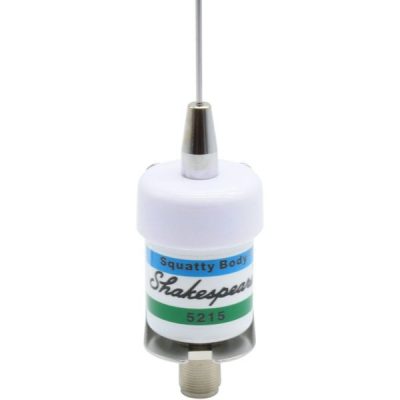
Shakespeare Squatty 5215 Whip Antenna (5214 in the US)
King of the Whip title challenger
These antennae are suited equally well on the masthead or the pushpit. This style is definitely a favourite of many seasoned ocean cruisers.
This is Shakespeare’s version, closely resembling the famous Metz Mantra but at a fraction of the cost. The whip-style antenna is small and light but very capable of great coverage, standing at 1m high.
The stainless-steel whip also has a fair bit of flexibility, which means it can take some accidental bending without damage, so when hauling in that prize tuna mid-ocean, you don’t have to worry so much about any breakages in the heat of the fight (in the VHF antenna department at least!)
Reasons to buy – A great little whip antenna from a high-quality brand – Widely available – Nice price point
Reasons to avoid – Up against stiff opposition for the title – Bit of a compromise compared to antennae made specifically for masthead or deck
Gain – 3dB Max power – 50 watts Weight – 650g Length – 1m
Buy it now at Bass Pro Shops

Supergain Glomex Task Whip Antenna
A smaller alternative
This tiny 530mm whip antenna was designed with RIBs in mind – but it also packs the same punch as you get in a VHF antenna twice its size.
Because of its RIB heritage it certainly is built to survive the bounciest conditions – perfect for those who either choose to or always find themselves with long upwind battles.
This would benefit from being mounted as high as possible but it seems to be pretty impressive even sat on the push pit. Quick to take on and off, it is well worth a look at, especially for smaller boats
Reasons to buy – Small and mighty – used to a proper work out – Easy to find a suitable elevated spot, due to its compact size
Reasons to avoid – Mount with care – it’s as easy to place it in a position of poor reception
Gain – 3dB Max power – 50 watts Weight – 125g Length – 0.53m
Buy it now at Gael Force marine
Buy it now at Cabelas
Fibreglass antennae
These fibreglass sturdy antennae will get you the best reception if deck mounting is your only option.

Lowrance (Simrad) 1710 VHF Antenna Ultraglass Q
This fiberglass antenna comes under many different company names – Lowrance, Simrad and B&G, all big players in the marine electronics world.
It comes with two fibreglass antenna parts which gives you two different possible configurations of antenna length.
Normal useable length is 1m, which is ideal for using in port or anchorage, but this can be extended to a whopping 2.4m when needed.
The connection is quick fit, so is part of the mount, which makes it really easy to remove the VHF antenna when you are not using the boat for extended periods without having to worry able cable runs.
Reasons to buy – Extremely adaptable with two different length options – Easily removable
Reasons to avoid – More care needed on connections from the environment when not connected
Gain – 6dB (max) Max Power – 100 watts ( max) Weight – 400g Length – 2.4m
Buy it now at Waveinn

Shakespeare Galaxy 5225 XT (white) 5226XT (black)
The go-to fibreglass deck mounted antenna for a decent signal, and globally available.
It is extra tough, hence the XT label, and comes in a choice of white or black with a UV protective polyurethane finish to keep it looking smart.
At 2.4m this antenna is probably as long as you would wish on a sailboat, but does get you the sort of boosted signal you need when not using the mast to get great coverage.
As mentioned previously, Shakespeare is a brand at the top of the game, so reliability is good and there is plenty of support, including a five-year warranty.
Reasons to buy – A very popular antenna from a leading brand. – Super stiff and tough which will last a long time – Great coverage from deck level
Reasons to avoid – Big. About as big as you can would want to get away with, so quite obtrusive
Gain –6dB Max Power – 100 watts Weight – 1800g Length – 2.4m
Buy it now at West Marine (white)
Buy it now at West Marine (black)
Didn’t find what you’re looking for? Head to Amazon’s dedicated sailing page for more marine products.
- Pontoon Boats
- Personal Watercraft
- nauticalknowhow
- Nautical Knots
- Tools and Calculators
Best Marine VHF Antennas for 2024
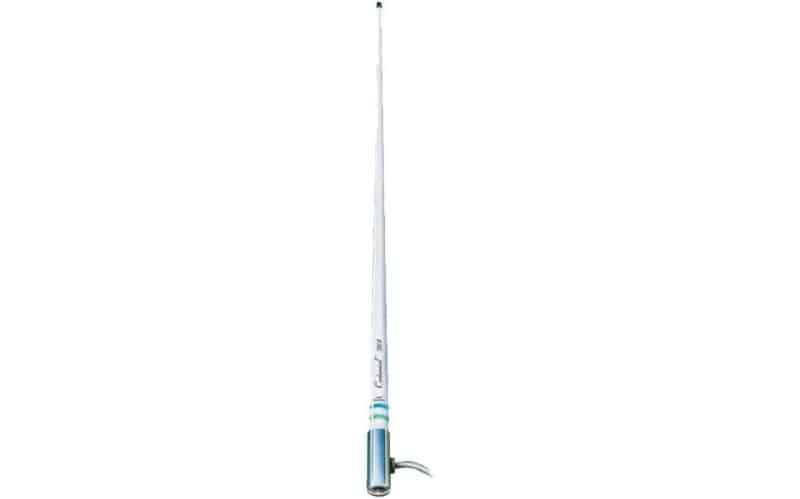
Shakespeare 5101 Centennial Marine VHF Antenna
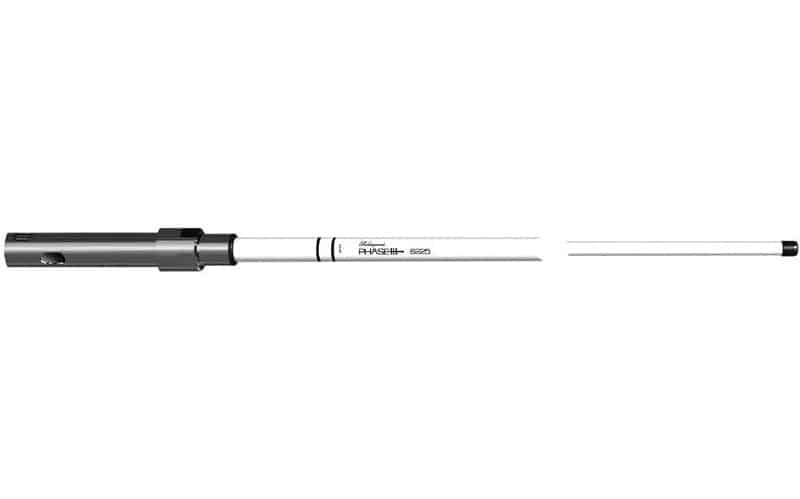
Shakespeare 6225 Phase III VHF Antenna
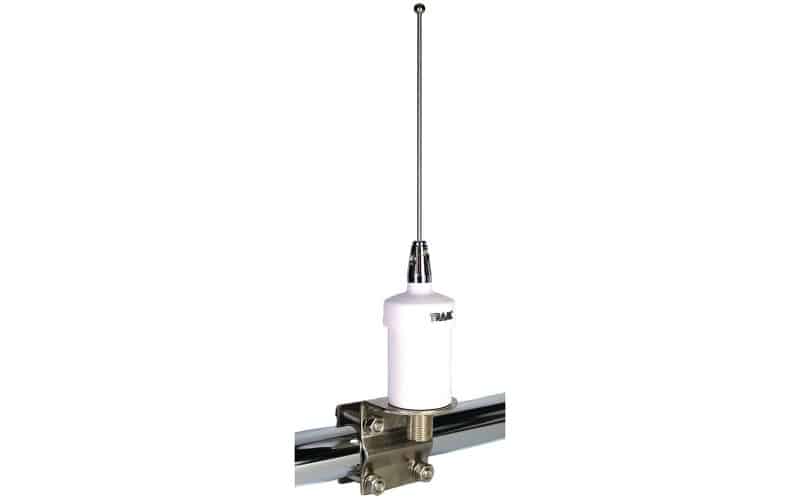
Tram VHF Marine Antenna
New boaters are often surprised by all the elements they need to get out on the water. It’s easy to overlook everything from a good fish finder to carpeting . VHF antennas are another one of those things we may overlook. But a good VHF antenna is an absolute must on the water. Unlike a handheld VHF radio , your VHF radio is only as good as the antenna that it uses to transmit signals. Let’s take a look at the best VHF radio antennas on the market.
Pound for pound, this may be the best marine VHF antenna out there. Shakespeare makes great antennas across the board. In fact, we’ve recommended several of their products. It’s no wonder that one of theirs would qualify as the best. They’re a reliable brand that really puts the effort into quality design. Not only do they look good, but they feature quality materials. And, most importantly, they work well. At the end of the day, that’s the real test. This antenna won’t let you down.
Starting with materials, Shakespeare puts in the effort to make this model a winner. The ferrule is chrome plated brass. The ferrule is the bottom part of an antenna that connects the whip to the base. It’s a little metal fixture that protects and houses the wires. It needs to be tough and made from a resilient material. Cheap metal ferrules will corrode. Cheap composite ones may break or degrade.
The whip of the antenna is made of fiberglass. It has a high gloss finish to keep it looking good. It also adds to the durability. Inside you’ll find brass and copper elements. That means that the metal inside, the part that actually receives and transmits, is solid. These high quality materials offer the best performance.
There is no mount included with this particular model. You’ll have to pick up a separate mount. That said, it offers high quality performance that still makes it well worth the effort. Any place that sells the antenna will also have a suitable mount. There are several different models that work well with this antenna size. Once you have one, the installation process is pretty smooth and easy. Expect to take about a half hour to get this installed and running.
The 5101 model offers a 6dB gain. The whip is 8 feet in length. The reception and performance are top notch though, and that’s what really counts here. There are more expensive models that may boost signal or performance slightly. We don’t think it’s likely you’ll find yourself in a place where this antenna is not able to perform the way you need it to. For the price and the performance, you won’t find a better marine VHF antenna on the market.
- Buy on Amazon →
- $99.99 Bass Pro →
- Buy on Walmart →
This antenna is definitely an investment. It’s quite a bit pricier than the others we’re listing here. But Shakespeare went above and beyond for the construction of this model. If you want premium quality, this is the best VHF antenna for your boat. Just check out some of the features that this one boasts.
Start with the silver plated outer conductor. That offers top of the line performance and reliability. The inner conductor is copper. Again, you’re getting the best and most reliable materials. The mounting sleeve doesn’t shirk on the quality either. It’s made from stainless steel, so expect it to hold up well.
The cables connect with an SO-239 connector. That’s also known as a PL-259 connector. If you’re not familiar, don’t worry. All you need to know is that this is the standard, high quality connection for most radio cables. It’s easy to connect and makes a solid UHF connection when they’re in place.
Attached with a reliable ratchet mount, and this unit can stand up to the elements well. The antenna itself is made from 50-ohm high gloss fiberglass. It’s bolstered by an ethafoam spacer. That gives it extra strength and durability in the high winds you may find at sea.
The overall length is 8 feet. The gain is 6dB and the max power input is 150w. Shakespeare offers a limited warranty of 8 years on the antenna. That’s one of the best in the industry and lets you breathe a little easier. You won’t have to worry about manufacturing problems and breakage for quite a while. You’re able to remove or reinstall the antenna without worrying about moving the coax cables.
Getting a good VHF antenna shouldn’t break the bank. Tram is here with their 1603 model to make the most from the least. At a fraction of the cost of other models, this is a surprisingly solid effort. There’s a nylon ratchet mount and the antenna itself is fiberglass. The element inside is coax cable rather than brass and copper. It’s 5ft low-loss RG58A/U coaxial cable with a standard PL-259 male/female connector. That means a little less power overall, but it’s still a reliable antenna.
Total antenna height is 38 inches, so just over 3 feet. That makes it shorter than some, but ideal for smaller boats. It features stainless steel hardware, including the L bracket. It operates with a 6dB gain. The antenna, of course, covers all marine frequencies . It comes with 15 feet of coaxial cable for set up as well.
Installation is easy with Tram. The nylon ratchet makes adjusting very simple. The mounting hardware means small hole installation is a breeze. All the hardware you need is included. The engineering of this model is better than you would expect. Especially for something so affordable. Is it going to blow you out of the water with its performance? Maybe not. But it is going to offer reliable and solid performance, and that’s what counts. Reception is fantastic. Don’t be surprised if you’re actually pulling in new weather band channels. Potentially several more than you had access to before you installed this one.
One thing to be aware of is exactly how you mount it. The stainless steel bracket is great, but watch where you put it. You don’t want to mount this on an aluminum rail, for instance. Putting two dissimilar metals together can cause trouble, after all. Especially if you’re boating in salt water. You may want to consider a rubber buffer between this and aluminum if that’s how you’re mounting it. Or find something else to attach it to. It can be a bit of a hassle, but it’s worth it in the long run.
Shakespeare 4 Foot Centennial Marine VHF Antenna

Shakespeare’s 4 foot Centennial is a solid marine VHF antenna. It features brass and copper elements inside. There’s a 3 dB gain, which is ideal for marine use. The antenna itself is fiberglass, but it’s solid construction. It features a smooth polyurethane coating as well. That helps it stand up to the elements, including the sun. No turning a dirty yellow color like untreated fiberglass will over time. You can expect it to last for years if it’s maintained well.
There’s a chrome-plated brass ferrule with standard 1inch-14 thread. You can mount it with a standard style 4187 or 5187 ratchet mount. Those are not included, though. Keep that in mind.
The sound quality of Shakespeare is why so many of their antennas made it onto this list. Like the earlier models, this one is well above par. You can tell these are just well made antennas. Especially when you compare them to lower quality options head to head. Solid construction and solid performance really makes Shakespeare a standout.
Some people might wonder why you’d ever want a shorter antenna. Well, if you’re ever gone under a short bridge and busted your old antenna, you won;t wonder. Sometimes having 8 feet or more above the boat isn’t really a good idea. In those cases, this 4 foot model is a solid choice. If you don’t want a giant antenna, Shakespeare has you covered.
One thing to be aware of here is that the connector isn’t attached. You may have to bust out the solder gun to get this properly attached and installed the way you want it. That’s not technically always a bad thing, though. With the connector unattached, it makes wiring in tighter spaces a little easier. But it could be an aggravating step. Especially if you’re not prepared for it ahead of time.
Metz Manta 6 VHF Marine Antenna
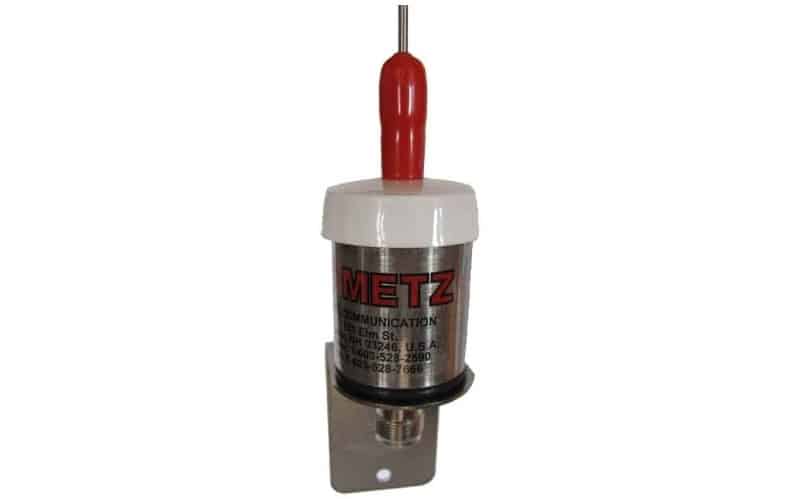
The Metz Manta 6 foot antenna is a solid marine VHF antenna. The stainless steel whip design is durable and long lasting. It features fully soldered connections and stainless steel housing as well. The cap is UV resistant so it can withstand a long life on your boat. No worries about the elements causing it to wear out and crack like with a cheaper model. There’s also a nickel-plated brass whip post. The L bracket for mounting is also included.
The Metz model features lightning protection and also a lifetime warranty. It covers the base coil, but you do need to have proof of purchase to qualify. This one won’t cover a resold antenna. This is the only brand you’ll find that offers a warranty of this kind as well. Metz really stands behind their products.
It boasts a 250 watt power rating. There’s also an internal ground. Of course, it also comes pre-tuned to the marine band frequencies. The frequency range is 156-163 MHz.
Things To Look for in the Best Marine VHF Antenna
The best marine VHF antennas have to check a few boxes. Not all marine VHF marine radio antenna are created equally. And not all are suitable for every boat. Where you have your antenna mounted could be as important as output power or antenna length. Things like horizontal angle are important as well. Here are a few things to consider.
This is a feature everyone wants to know about when they buy an antenna. Does it have a good range? Well, that’s a hard thing to answer. No one antenna will give you a definite range in the product details. Why? Because it depends on a lot of factors. First and foremost is how you mount it. The higher up an antenna is, the greater range it has. That’s why antennas are always posted at the top of everything. Houses, office buildings, and boats. An antenna on the ground will have a much lower range than the exact same antenna on top of a building. A taller antenna is typically better than a short one.
If you want to maximize range, make sure your marine vhf radio antenna is mounted at the highest possible point. So if you have a sailboat , you want that antenna on top of the mast. If you have a fishing boat , up on the roof of the cabin is where you want it.
Antennas are often described according to their dB rating. This is also known as antenna gain. In simple terms, gain refers to an antenna’s ability to focus energy. That focused energy improves its ability to transit. Or at least makes it seem that way.
When an antenna has a high dB rating, it focuses energy like a disc. The disc is around the antenna itself. Think of it like a plate spinning on a chopstick. The antenna is a straight shaft. But the energy field is radiating out like a plate. The signal that receivers pick up is stronger as a result.
A lower dB antenna is less tightly focused. If a high dB signal is like a plate, a low dB signal is more like a ball. It still radiates out, but the signal also travels above and below the antenna.
It may seem like a high dB antenna is best. At high enough levels, the signal is transmitted at a nearly flat line like a laser. But is that best? Your boat is on water, which moves. That means your antenna is rarely perfectly vertical. A high dB signal may therefore be broadcast right into the water or into the sky. If the seas are rough, the signal bounces a lot. A lower dB gain is ideal, then. No matter how your boat moves, the signal still transmits.
Signals transmit on a line of sight basis. That means anything in the way will disrupt your signal. And at higher gain, the signal is narrower. That makes it potentially more likely to be obstructed.
For that reason, a 3 dB gain is good for a boat. Higher gain, like 6 dB, may work, but it could be spotty. Something like 9 dB would be counterproductive.
What we see when we look at an antenna is essentially a case. It houses and protects the important, functional parts. This includes the electrical element. That element is what gives off and also receives signals. It can be made of things like copper, brass, or even coaxial cable. Coaxial cable is a cheaper option, but brass and copper elements perform better.
For the antenna itself, you’re looking at either fiberglass or stainless steel. Shorter stainless steel antennas are less affected by wind. They are also more durable. A fiberglass antenna can be cheaper, however. Also they will be longer. But fiberglass may not be as durable. At the very least, you want heavy duty fiberglass construction.
Fiberglass can be more durable if you get it coated. Look for brands that coat the fiberglass with polyurethane.
The pieces that join and mount your antenna are worth paying attention to as well. A high quality chrome plated brass ferrule is better than nylon ones. Stainless steel hardware is always a safe bet.
A nylon ratchet mount may be fine for masthead mounting of the antenna, of course. But look for things like higher quality silver plated brass elements inside. Better antennas will always have these higher quality materials. They are extremely durable and have the high quality features you need.
Mounting Marine VHF Antennas
This may seem like an insignificant thing. If there is no mounting kit you’ll need to find those extra materials. That’s an extra step and an extra cost you may want to avoid.
The longer the wire used in your antenna, the more it will damage your signal overall. You lose strength with length. A small gauge coaxial cable can lose 3 dB for every 49 feet. That’s another reason why copper is better than coax cable. But also another reason to be wary of going too big with an antenna. Thin cable, something like rg 58 cable, may not be the best choice if you want a more powerful antenna.
In general you want thicker cable rather than a longer antenna. It’s a balancing act to get the perfect set up. But if you have more than 100 feet of cable, you may only get 80% efficiency out of it.
Thicker coaxial cable, or copper/brass elements are better for improving signal strength.
The Bottom Line
There are plenty of great choices out there for VHF marine antennas. Whether you want a shorter antenna, two antennas or whatever, find what fits your boat best. If you’re unsure on installation, ask for help at your local marina. Or look up some handy videos online. A VHF radio can be a lifeline for a boater. And that means you want to make sure you have the best VHF antenna you can get.
As always, stay safe and have fun.
My grandfather first took me fishing when I was too young to actually hold up a rod on my own. As an avid camper, hiker, and nature enthusiast I'm always looking for a new adventure.
Categories : Boats
Robert Clark on June 17, 2022
I especially loved that Shakespeare was drafted. The cable failed to have an outsized connector therefore the boat failed should be disassembled to connect the replacement antenna cable. Instead, unscrew the adapter after passing the new cable through. I’ve got been to the ocean several times with this antenna, it’s paired with a Uniden Solara radio and works perfectly.
Robert Clark on June 30, 2022
Very helpful informing
Leave a Reply Cancel reply
Your email address will not be published. Required fields are marked *
Save my name, email, and website in this browser for the next time I comment.
More in Boats

What Is A Gunwale?

131 of the Best Hawaiian Boat Names

167 Patriotic Boat Names

The 138 Best Boat Names for Dog Lovers

The People’s Poncho Review and Ratings

Oru Lake Kayak Review

About Boatsafe
Established in 1998, BoatSafe is your independent guide into the world of boating, fishing, and watersports. We provide expert insights and detailed guides to help you find products tailored to your needs and budget.
Contact Boatsafe
- Address: 4021 West Walnut Street. Rogers, AR 72756
- Phone: (479)339-4795
- Email: [email protected]
Site Navigation
- How We Test
- Corrections Policy
- Privacy Policy
- Terms & Conditions
- Editorial Policy
- Affiliate Disclosure
Our Reviews

All content is © Copyright 2024. All rights reserved.
- 2024 BOAT BUYERS GUIDE
- Email Newsletters
- Boat of the Year
- 2024 Freshwater Boat and Gear Buyers Guide
- 2024 Boat Buyers Guide
- 2024 Water Sports Boat Buyers Guide
- 2024 Pontoon Boat Buyers Guide
- Cruising Boats
- Pontoon Boats
- Fishing Boats
- Personal Watercraft
- Water Sports
- Boat Walkthroughs
- What To Look For
- Watersports Favorites Spring 2022
- Boating Lab
- Boating Safety

How to Choose the Right VHF Antenna
- By Jim Hendricks
- March 6, 2023
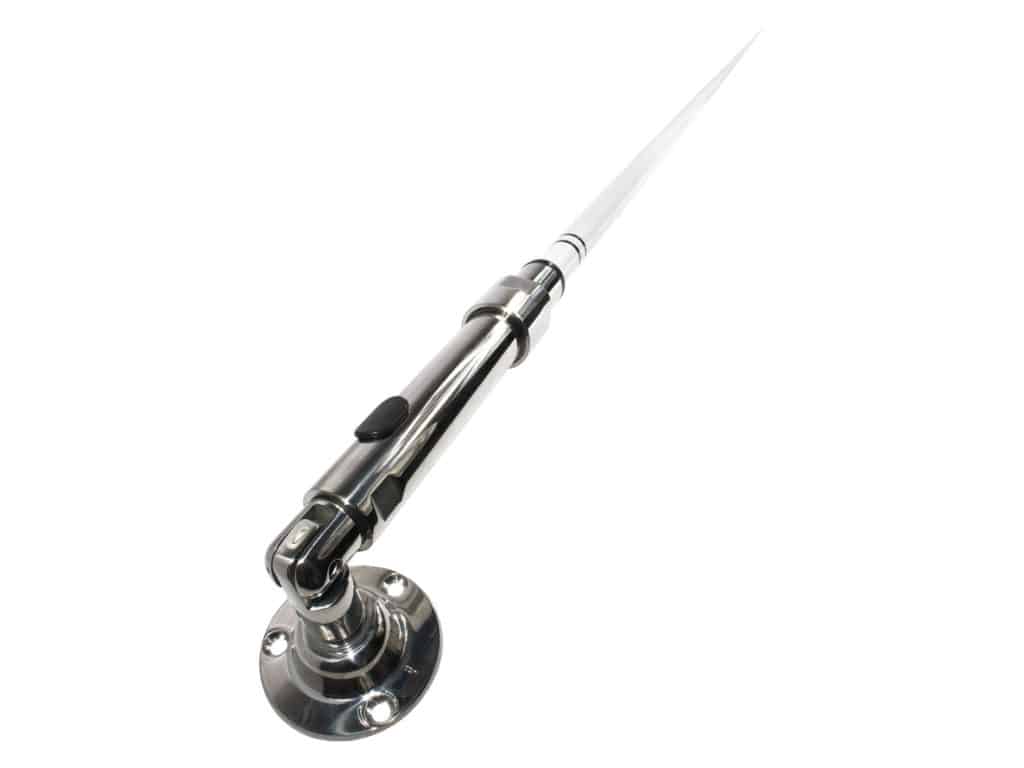
A long-held adage maintains that a marine fixed-mount VHF radio is only as good as the antenna with which you match it. Translation: Don’t spare the dollars. Major brands such as AirWave, Digital, Glomex and Shakespeare offer VHF antenna models in a range of prices to suit different budgets, but you want the highest-end model you can afford. The benefits of high-end models are more durable components, improved signal-to-strength ratio for more efficient broadcasting, and thicker fiberglass outer sheaths for a longer service life. Within each price-point category, there are also various types of VHF antennas to accommodate different boat styles and communication needs. Let’s look at some of the factors to consider when buying a VHF antenna.
The higher or taller the antenna, the greater your range. That’s because VHF waves travel in what is known as line of sight, and the higher the antenna, the farther it can see over the horizon. With this mind, why do companies offer antennas ranging from 3 to 23 feet? Much depends on the boat and its communication needs. A sport-fishing yacht needs to communicate at greater distances when offshore than a family runabout cruising the Intracoastal Waterway. Bigger boats can also accommodate taller antennas. Mounting antennas as high as possible—such as on the hardtop—has the same effect in boosting VHF range.
Measured in decibels, antenna gain represents the VHF transmission pattern, and it can also affect range. Antennas vary from 3 dB for a 4-foot model to 9 dB for a 12- to 23-footer. Generally speaking, the higher the decibels, the greater the range, but with a caveat. Higher gains broadcast at a narrower pattern than lower gains. So, as a boat rolls and pitches, higher gains intermittently angle downward into the water or upward to the sky rather than toward the horizon. This reduces range. As a consequence, smaller craft prone to roll and pitch are better off with a medium gain. The most popular for boats ranging from 20 to 35 feet in length is an 8-foot, 6 dB antenna that provides less range than 9 dB, but it is also less susceptible to the effects of pitch and roll.
Cable Considerations
The standard PL-259 plug that connects the antenna’s coaxial cable to the back of a radio is relatively large in diameter. To make installation easier, these connectors are usually installed after the cable is routed through rigging tubes, pipes and bulkheads. Traditionally, the coaxial wires need to be soldered to the plug. Lower-priced antennas still have these, but higher-end models now feature screw-on plugs that dispense with soldering. Some antennas also feature a connector at or close to the base of the antenna that lets you easily remove or replace the antenna without the hassle of snaking a new cable through the rigging.
Read Next: Common Mistakes When Using a VHF Radio
Ratchet-style antenna mounts are popular add-ons for boaters who need to clear low bridges—be it on the water or while trailering to and from the launch ramp. The female ferrule at the base of the antennas screws directly to the threaded mount. Want to get boujee? Consider Taco Marine’s electric mount that raises and lowers an antenna at the push of a button so you don’t have to climb on the hardtop to perform this task.
In the past, fiberglass VHF antennas were all white, but brands such as AirWave, Digital and Shakespeare now offer black antennas in case boaters want to complement a particular color scheme.
- More: Electronics , How-To , March 2023 , vhf , What to Look For
More How To

On Board With: Brian Grubb
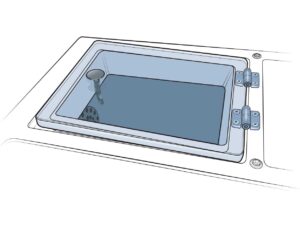
Installing Clear Acrylic Livewell Lids

Captain of Dive Boat That Caught Fire Sentenced to Four Years
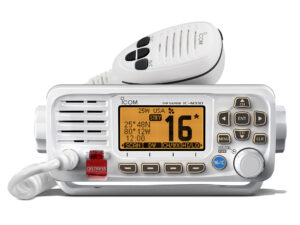
How to Make DSC Fully Functional on a VHF Radio
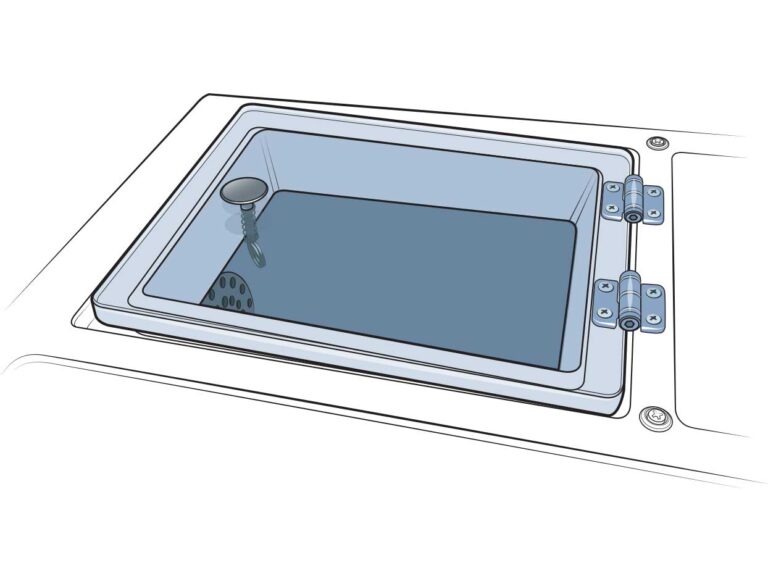

Boat Test: 2024 Solara S-250 DC
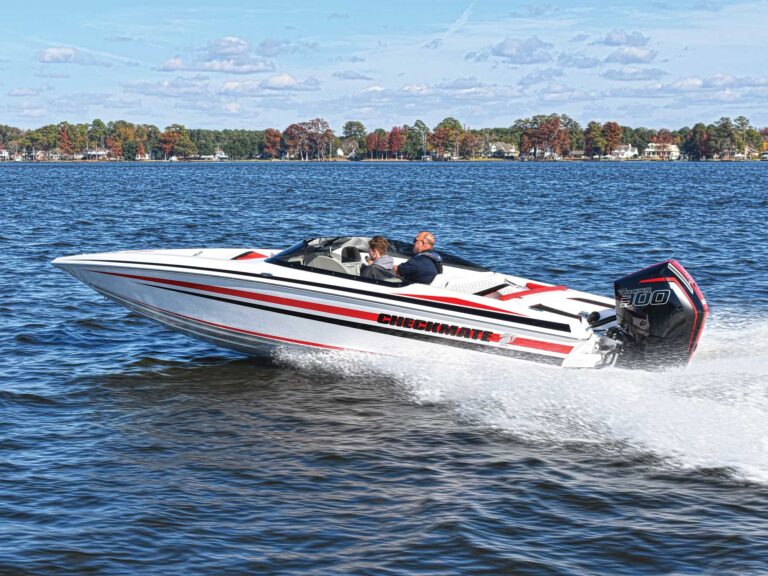
Boat Test: 2024 Checkmate Pulsare 2400 BRX
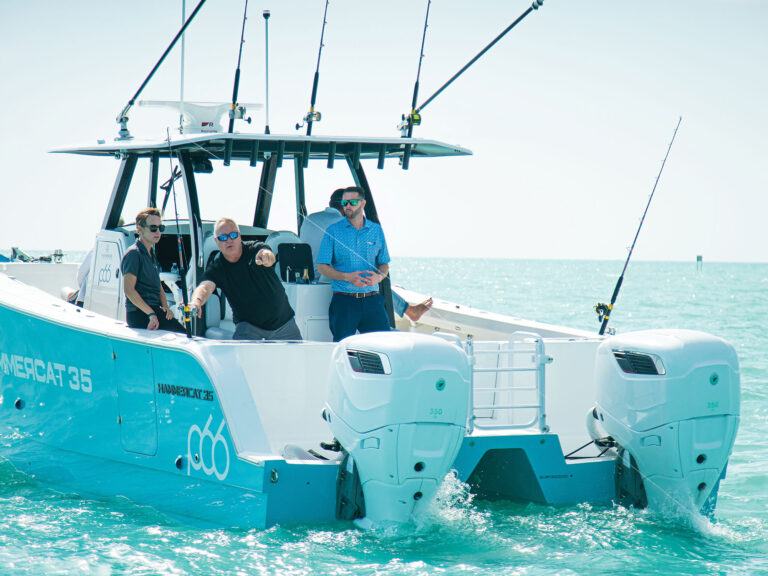
Cox 350 Diesel Outboard

- Digital Edition
- Customer Service
- Privacy Policy
- Cruising World
- Sailing World
- Salt Water Sportsman
- Sport Fishing
- Wakeboarding
Many products featured on this site were editorially chosen. Boating may receive financial compensation for products purchased through this site.
Copyright © 2024 Boating Firecrown . All rights reserved. Reproduction in whole or in part without permission is prohibited.
- 2024 BOAT BUYERS GUIDE
- SHALLOW WATER FISHING
- Email Newsletters
- Boating Tips
- Boating Safety
- Electronics
- Baits & Lures
- Fishing Tackle
- Fishing Travel
- Conservation
- Fishing Knots
- Women in Fishing

Choosing and Using the Best Marine VHF Antenna
- By Chris Woodward
- Updated: January 9, 2020
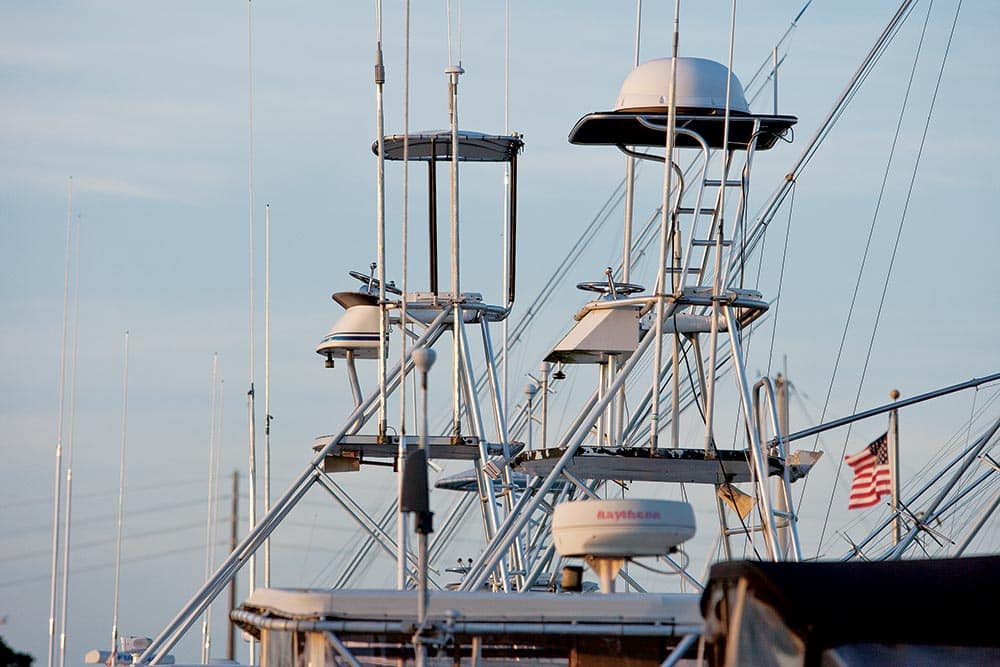
When shopping marine electronics , it’s easy to fall for a cool new multifunction display or even a VHF/AIS combo. But when it comes to shopping for parts such as transducers and antennas, where’s the love?
For anglers, the right or best VHF antenna could mean the difference between finding a great bite or enduring the skunk. On a more serious note, it could rescue you from a stranding or accident.
“If all things are equal — including antenna height and radio model — you could go from a range of 10 miles to 25-plus miles just based on the materials in the antenna,” says Chris Catoe, marine sales manager for the Shakespeare Antenna Group.
For that reason, most experts advise buying the best antenna you can afford. Prices range from about $30 to more than $300 for most recreational fishing vessels.
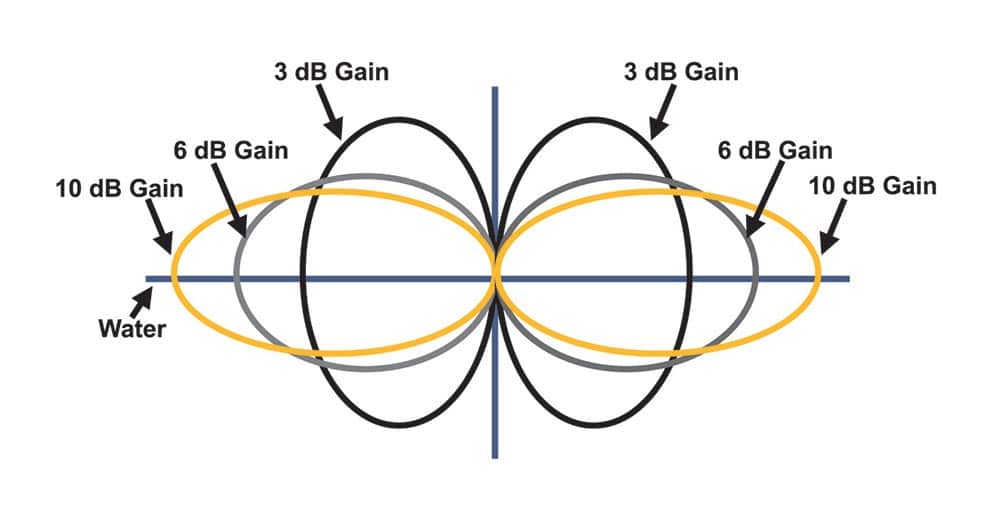
What is a VHF Marine Antenna?
“We have sensitive receivers,” says David McLain, national sales manager for ICOM, makers of VHF marine radios. “But if you match one with just a $30 antenna, you’re not going to get the range an ICOM can get you.”
At Shakespeare, VHF marine antennas are grouped into three categories that correlate to good, better and best products. Those categories are Classic, Galaxy and Phase III models. Key differences boil down to what’s inside, whether coaxial cable, a combination of coax, brass and copper, or all brass and copper; brass and copper create the greatest efficiency.
However, before dissecting antennas, anglers should understand just what an antenna is, says John Jones, vice president of engineering for Digital Antenna. “It’s a machine,” he says. “People think it’s a piece of wire. Anything we build is a physically resonant circuit for the frequencies we intend to use. An antenna converts electrical signals into photons — it’s a photon generator.”
Catoe says consumers often think, as well, that a VHF antenna transmits only from its tip. “It radiates from the base up,” he confirms.
Because of the energy surrounding the antenna and because the signals travel by line of sight, the antenna’s placement aboard a vessel is key. Even the best antenna won’t perform when placed too close to another antenna using similar frequencies (AIS or another VHF), or when mounted too low or too near metal objects.
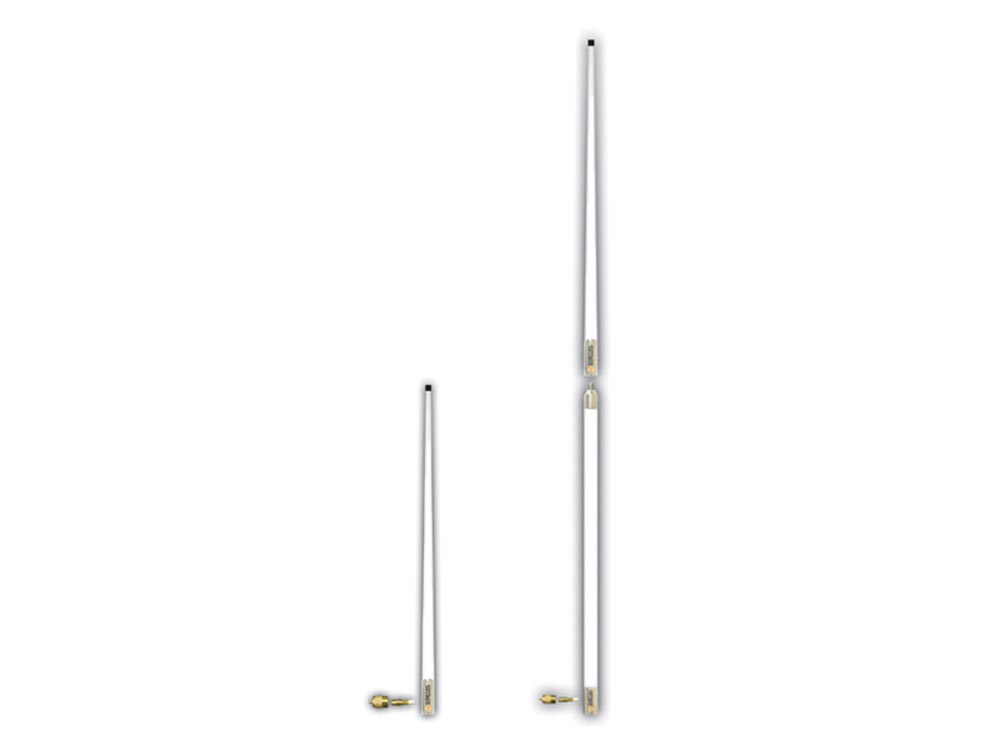
Marine VHF Antenna Height and Strength
Other considerations for choosing the right VHF antenna include antenna height and gain. Catoe says the vast majority of powerboats in the 24- to 32-foot range do well using 8-foot antennas with 6-decibel (dB) gain. A 3- to 4-foot antenna that’s 3 dB is generally recommended for boats under 24 feet. Larger vessels can opt for 12- to 18-foot, 7 to 8 dB antennas.
“As a general rule, antenna height should be less than half the length of the boat,” Catoe says.
Higher-dB antennas generate greater effective radiated power, and that can translate into greater range. However, the lower-dB antennas, such as a 3 dB stick, are recommended for vessels like sailboats carrying antennas atop a tall mast that sways in high seas. The 3 dB antenna creates a larger signal pattern, but that pattern doesn’t travel as far, so it doesn’t leave the horizon as dramatically when the boat pitches.
Anglers who own VHF radios that are equipped with Automatic Identification System can use one VHF antenna for both functions as long as the AIS is receive-only. If your AIS unit also transmits, two antennas are necessary.
“We always recommend dedicated antennas for each,” Catoe says. “Any time you split something, you usually sacrifice something. Most people like to have both systems operating optimally.”
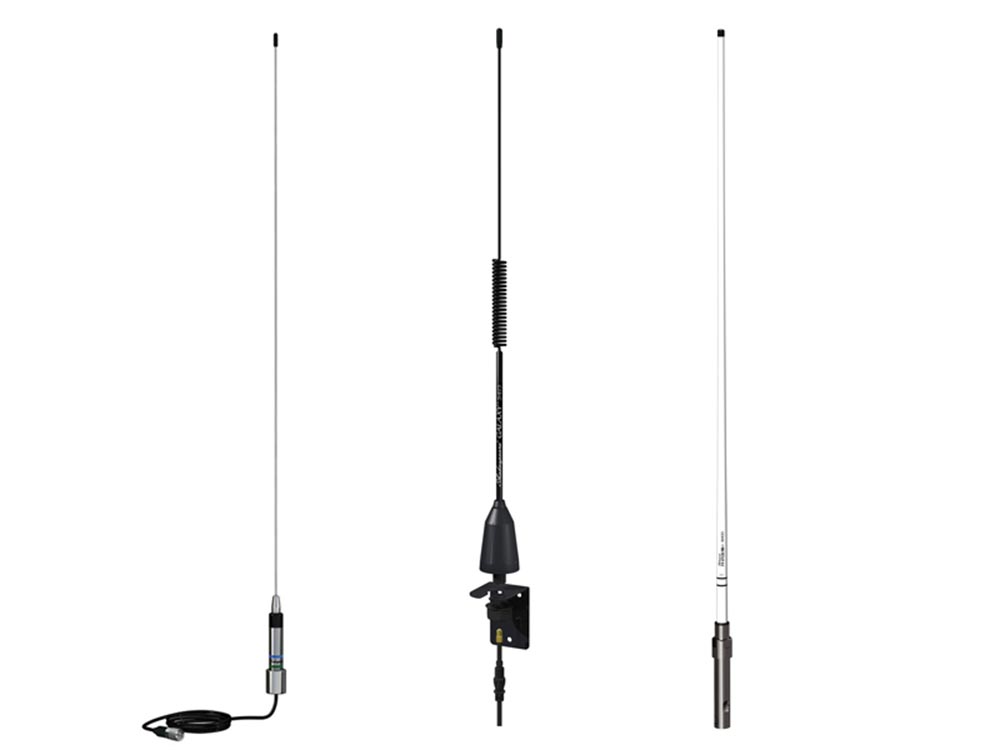
Durable Marine VHF Antennas
In most cases, an angler breaks a VHF antenna before it dies of natural causes. “Antenna life span is hard to establish. Some last two years; some last 30,” Catoe says. “It depends on how you’re taking care of it, and which grade of antenna you purchased.”
Better antennas have UV blockers in the paint or they might be heavier-duty fiberglass or come with stainless steel rather than plastic mounts. Shakespeare recommends boaters wash their VHF antenna with soap and water whenever they wash the boat. Don’t use abrasive detergents that can strip the finish off the fiberglass. Some boaters apply wax, Catoe says, which will not interfere with the antenna function.
Tom Burden — senior product content editor for West Marine, which sells a variety of antennas, cables and connections — says that corrosion can become a major problem, particularly at connection points.
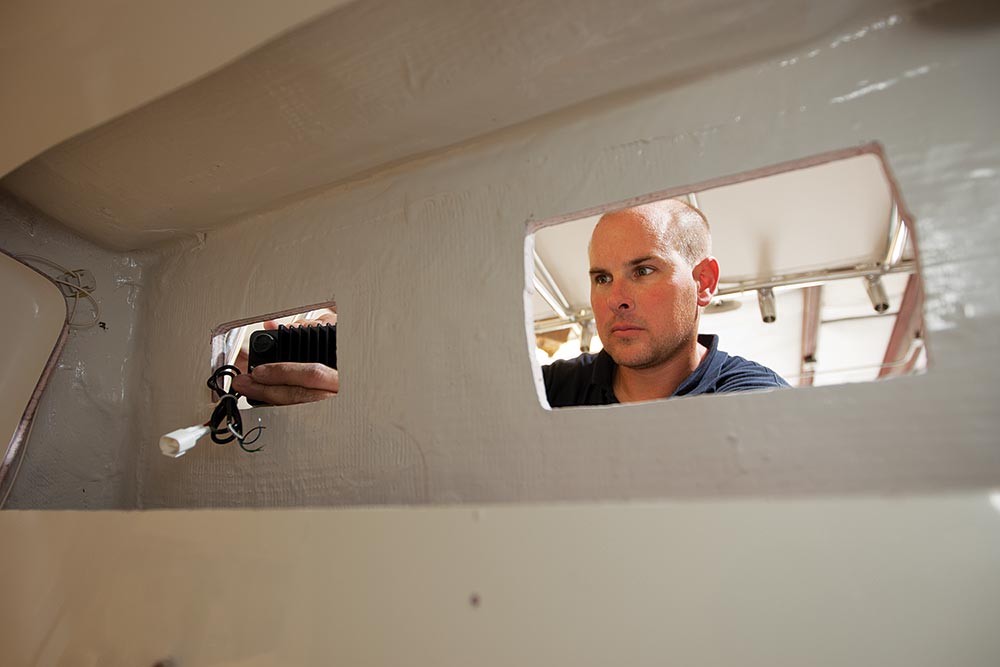
If you experience radio problems you think come from the antenna, you can always test the signal strength by calling a friend on another boat, Burden advises. Have that friend start fairly close and move away until the signal fades.
Shakespeare also sells an ART-3 antenna meter. That unit tests the voltage standing-wave ratio, the output power, battery voltage and the radio’s receiver. If the antenna is faulty, it can be replaced. Most antennas come with three- to five-year warranties.
When you buy a new antenna or replace an old one, chances are you won’t run into the tech creep that plagues other electronics types. Physics more or less defines the technology of an antenna, so it hasn’t changed much over time. Materials have changed a little, but “the biggest trend I’m seeing,” says Catoe, “is the combination of things: antennas or radios that have multifunctions (AIS and VHF together, or cellular and Wi-Fi). It’s all about centralizing all product in a smaller footprint.”
- More: communication , Electronics , Marine Electronics , VHF Radio
- More Electronics

New Gear: The Siren Connected Boat App

How Big a Fish Finder Do I Really Need?
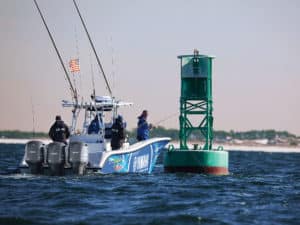
2023 Boat Buyers Guide: Engine-Integrated Autopilot
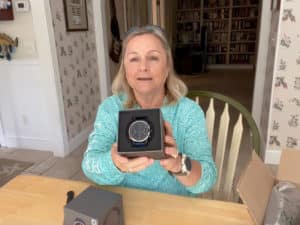
Video: Unboxing the Garmin quatix 7 Smartwatch

The Best Kingfish Live-Bait Rig

Massive Mako Caught on Florida Beach

Kona Hawaii Offshore Fishing

Targeting Rockfish in the Pacific Northwest
- Privacy Policy
- Cruising World
- Sailing World
- Salt Water Sportsman
- Sport Fishing
- Wakeboarding
Many products featured on this site were editorially chosen. Sport Fishing may receive financial compensation for products purchased through this site.
Copyright © 2024 Sport Fishing Firecrown . All rights reserved. Reproduction in whole or in part without permission is prohibited.
- New Sailboats
- Sailboats 21-30ft
- Sailboats 31-35ft
- Sailboats 36-40ft
- Sailboats Over 40ft
- Sailboats Under 21feet
- used_sailboats
- Apps and Computer Programs
- Communications
- Fishfinders
- Handheld Electronics
- Plotters MFDS Rradar
- Wind, Speed & Depth Instruments
- Anchoring Mooring
- Running Rigging
- Sails Canvas
- Standing Rigging
- Diesel Engines
- Off Grid Energy
- Cleaning Waxing
- DIY Projects
- Repair, Tools & Materials
- Spare Parts
- Tools & Gadgets
- Cabin Comfort
- Ventilation
- Footwear Apparel
- Foul Weather Gear
- Mailport & PS Advisor
- Inside Practical Sailor Blog
- Activate My Web Access
- Reset Password
- Customer Service

- Free Newsletter

Pearson Rhodes 41/Rhodes Bounty II Used Sailboat Review

Hallberg Rassy 42 Used Sailboat Review

How to Perform Your Own Pre-Buy Inspection

Beneteau 323 Used Boat Review

How Does the Gulf Stream Influence our Weather?

Can You Run a Marine Air-Conditioner on Battery Power?

Preparing Yourself for Solo Sailing

Your New Feature-Packed VHF Radio

Practical Sailor Classic: The Load on Your Rode

Anchor Rodes for Smaller Sailboats

Ground Tackle Inspection Tips

Shoe Goo II Excels for Quick Sail Repairs

What Oil Analysis Reveals About Your Engine

An Unusual Sailboat Shines a Light On A Sustainable Future

Is It Time to Get an Electric Dinghy Motor?

Bottom Paint 30-Month Update

Battle of the Teak Cleaners — Snappy Teak-Nu vs. Star Brite

New Seacocks for the Offshore Sailor

Bottom Paint Care

Are E-bikes Worth the Extra Weight and Cost?

How to Handle the Head

How to Select Crew for a Passage or Delivery

Preparing A Boat to Sail Solo

Re-sealing the Seams on Waterproof Fabrics

Waxing and Polishing Your Boat

Reducing Engine Room Noise

Tricks and Tips to Forming Do-it-yourself Rigging Terminals

Marine Toilet Maintenance Tips

Learning to Live with Plastic Boat Bits
- Marine Electronics
- Systems & Propulsion
Antenna Gain and VHF Transmission Range

Recreational marine VHF antennas are usually broken down into three categories: 3- and 4-foot sailboat antennas (3dB gain), 8-foot powerboat antennas (6 dB gain) and 16-plus-foot, long-stick antennas (9+ dB gain) that are popular on larger, long-range craft. Antenna gain is a ratio related to an antennas effective radiated power (ERP) instead of a fixed quantitative value.
An antennas decibel rating can be thought of as the design of its transmit and receive footprint, or its radiation pattern. A 3dB gain antenna has a nice circular transmit and receive pattern, whereas a 6dB gain antenna operates in more of an oval vertical plane.
For every 3dB increase in an antennas gain rating, the effected radiated power of the antenna doubles. Thus, a 6dB gain, 8-foot VHF antenna has double the ERP of a 3dB gain sailboat antenna, and the elliptical shape of the signal radiation pattern of a 9dB gain long stick antenna has three times the ERP of the 3-foot sail antenna.
A 9dB gain antenna will communicate farther than a 3dB or 6dB gain antenna mounted at the same height abovedeck, on a calm day. But with the increase in antenna gain, attributed to the antennas elongated radiated beam pattern, comes a tradeoff of signal fading when in a rolling sea. Because the beam pattern of a 9dB gain antenna is elongated, when a vessel rolls, the service area of the 9dB gain antenna dips toward the waterline and effectively puts VHF communications out of range until the antenna is once again level with the horizon.
Communication in the 150Mhz marine VHF band is strictly line of sight. And although it is important to install an antenna that has as much gain as your particular vessel can physically and practically support, antenna height remains the single most important factor in effective transmission of VHF signals. A 3dB gain antenna on top of a sailboat mast will easily outperform a 6dB gain antenna on a center console powerboat.
To determine communication range expressed in miles, you take the square root of the height of the VHF antenna above the waterline and multiply it by a factor of (1.42). Do this same calculation for the shore station or other boat that you are trying to talk to and add the two numbers together to arrive at the maximum distance that the two radios can communicate.
Mounting an antenna higher on a boat will usually require a longer coaxial cable run, and a longer coaxial cable means increased signal loss. In typical installations (RG-58 coax), adding elevation will outweigh these signal losses. Ideally, however, you should select coaxial cable that keeps signal loss to less than 2.2 dB.
RELATED ARTICLES MORE FROM AUTHOR
Doesn’t the db gain of an antenna have more to do with transmitted and received signal strength rather than envelope patterns? A 3db gain doubling the sensitivity. A 6db gain doubling again and a 9db doubling again. Each increase in gain provides a stronger signal to work with. I do not believe the increased gain has much to do with the radiated direction of received and transmitted signals.
As with everything else in life it’s a compromise – an aerial with gain in some directions will get that gain by being less sensitive in others, hence talking about the shapes where the aerial is more sensitive.
A 3dB gain antenna will be twice as sensitive to signals (coming from the right direction) to a theoretical aerial that has the same sensitivity to signals coming from any direction. It’s like cupping your hands over your ears to hear a distant sound – if you cup you ears towards the sound your hearing is more sensitive in that direction than it would have been without cupping your hands, and less sensitive in other directions.
In the same way an aerial with gain squeezes more transmit power in some directions that others. Imagine using a rolled up sheet of paper as a megaphone – your voice will be louder in front of the megaphone than it would have been without it, and and quieter behind, as the sound energy has been squeezed into a narrower beam.
LEAVE A REPLY Cancel reply
Log in to leave a comment
Latest Videos

What Is The Best Folding Bike For Your Sailboat?

The No Expense Spared Antigua 60 Cruising Sailboat Soolaimon

How To Buy Sails – With Joe Cooper

Bavaria C42: What You Should Know | Boat Tour
- Privacy Policy
- Do Not Sell My Personal Information
- Online Account Activation
- Privacy Manager

Please verify you are a human
Access to this page has been denied because we believe you are using automation tools to browse the website.
This may happen as a result of the following:
- Javascript is disabled or blocked by an extension (ad blockers for example)
- Your browser does not support cookies
Please make sure that Javascript and cookies are enabled on your browser and that you are not blocking them from loading.
Reference ID: 9a5beadb-15e9-11ef-8dc7-f570e8391cd2
Powered by PerimeterX , Inc.
635th Anti-Aircraft Missile Regiment
635-й зенитно-ракетный полк
Military Unit: 86646
Activated 1953 in Stepanshchino, Moscow Oblast - initially as the 1945th Anti-Aircraft Artillery Regiment for Special Use and from 1955 as the 635th Anti-Aircraft Missile Regiment for Special Use.
1953 to 1984 equipped with 60 S-25 (SA-1) launchers:
- Launch area: 55 15 43N, 38 32 13E (US designation: Moscow SAM site E14-1)
- Support area: 55 16 50N, 38 32 28E
- Guidance area: 55 16 31N, 38 30 38E
1984 converted to the S-300PT (SA-10) with three independent battalions:
- 1st independent Anti-Aircraft Missile Battalion (Bessonovo, Moscow Oblast) - 55 09 34N, 38 22 26E
- 2nd independent Anti-Aircraft Missile Battalion and HQ (Stepanshchino, Moscow Oblast) - 55 15 31N, 38 32 23E
- 3rd independent Anti-Aircraft Missile Battalion (Shcherbovo, Moscow Oblast) - 55 22 32N, 38 43 33E
Disbanded 1.5.98.
Subordination:
- 1st Special Air Defence Corps , 1953 - 1.6.88
- 86th Air Defence Division , 1.6.88 - 1.10.94
- 86th Air Defence Brigade , 1.10.94 - 1.10.95
- 86th Air Defence Division , 1.10.95 - 1.5.98

Crash of an Antonov AN-24 in Moscow


- Forums New posts Unanswered threads Register Top Posts Email
- What's new New posts New Posts (legacy) Latest activity New media
- Media New media New comments
- Boat Info Downloads Weekly Quiz Topic FAQ 10000boatnames.com
- Classifieds Sell Your Boat Used Gear for Sale
- Parts General Marine Parts Hunter Beneteau Catalina MacGregor Oday
- Help Terms of Use Monday Mail Subscribe Monday Mail Unsubscribe
VHF Antenna - Deck or Mast Mount
- Thread starter jamieFL
- Start date Feb 19, 2019
- Forums for All Owners
- Trailer Sailors
I have a future project I'm trying to plan. My VHF is about 20 years old and not in the best condition. The antenna falling apart, is on the transom and in the way, so I'm starting there. I wanted to move it to the top of the mast, but after a little reading of pros and cons, I'm not sure the work is worth it. First, I cannot find a thru-hull deck connector to place by the mast. I have a deck stepped mast and my boat is currently a trailer sailer. The other option, would be a temporary antenna that could be set on top of the deck, cable through the companionway, when the radio was needed. Lastly, I could replace the antenna on the transom. I'm not really interested in that since it was in the way already to begin with. Are there any other options? What antenna, cable, and mount are recommended that will help make my decision?
Davidasailor26
Obviously your range will be much greater from the masthead than on the transom. There are calculators to help figure out the difference would be, and it depends on the height of the other station, but the masthead will probably at least double the distance. If you sail on an inland lake with a fixed radius then maybe that doesn't matter, but anywhere along a coast or further I'd want the extra range. As for the idea of temporarily moving the antenna when you need to use the VHF - that's not really something I'd want to mess with in a mayday situation like a man overboard where seconds count.
jamieFL said: ... First, I cannot find a thru-hull deck connector to place by the mast. ... Click to expand
Neither of those are shielded and will not work with antenna coaxial cable. Unfortunately, I cannot fine anything like these for VHF. I use the boat in the Gulf around the Hernando Beach area, down to Tampa Bay. I won't ever be too far from shore.
There are thru-hull glands that you will use, not connectors. If you are using standard RG8X or LMR240, then the 1/4" gland will be the correct size. You will run your cable from the radio, thru the deck gland, then you will terminate the cable with the appropriate connector. You can use either a PL-259 or an SO-239. If you use the 259 you will need a barrel connector. I would recommend a 239 connector this way you can connect and disconnect as you see fit. Always wrap the connection with self-amalgamating tape, not junky electrical tape. Now you will be able to remove the mast without having to pull the cable out of the boat or mast. Get the antenna up on that mast. It is there for your safety. However, it is not just for you. You may be called upon to assist a vessel in distress and you may be the only vessel that can hear the distress call. You will be require to assist by relaying the distress call. Good luck!
there are proper vhf bulkhead connectors that take a pl-259 on each side; look online at WM in the antenna section
Will Gilmore

Crazy Dave Condon
The two inch has locking collars at each end which I used to secure caulking well if I did not have enough length left for a washer on each end followed by the locking collar. If there was enough room left, I did use washers. Either way, it worked. However, I was careful to drill thru the deck for the size of the item taking into account I had enough room only to use the locking collars on both ends. The key is a tight fit. It worked well for me either way. The above was used for trailerable sailboats. I routed the VHF cable out of the mast by drilling a hole and inserting a rubber grommet to protect the cable. Another way is to drill a small pilot hole in the side of the mast and then switch to a larger drill bit angling it upward toward the top of the mast so the cable could run out at an angle without issues. I did take a round file to file off any burrs or sharp edges. That to worked either way. as for Tedd's suggestion, you will for mast feet and base too will requiring drilling thru that and then another hole thru the deck unless mast lighting wires went in that way from the mfg... In most cases that is not the case and if you do it that way may be cumbersome. It depends on the boat. On the Hunter 260, there is a compression post and that is not ideal for tedd's suggestion.

Funny, it uses the ancor two inch thru deck fitting. Not sure how it would look like on top of the deck but I still prefere a low deck fitting so one will not trip over close to the mast with VHF wire exiting mast at an angle.
Looks like you may have finalized your plans... but if not, completely... do consider the advantages of a stern mount. I understand about range and do like having an antenna on our mast head, 54 feet above the water on our present boat. However, I have had to replace that coax run once and the antenna twice over the decades, and it cost some $$$. Prior 26 footer, for ten years, had an antenna mounted on a stern rail. I used a bottom coil-loaded 'shorty' antenna, and it did indeed lower the total range some. Worth remembering is that in an emergency your communication with the USCG will still be pretty good because they deliberately site their antenna on tall structures or hills. And then there is the security of having the antenna not involved with the mast. (I was crew on a sailboat that lost the whole rig over the side, and still remember the security of that boat having a stern-mounted VHF antenna so we could talk to the USCG and generally have continuous communication. Also, with the rail mount, it's easy to run new cable. No wrong answers, but there are advantages either way.
The antenna I'm replacing is currently mounted to the transom. On my 25 foot boat, it interferes with the Bimini, is very much in the way, and even though it had an articulatable mount had to be unbolted to trailer. In the stern rail, I could move it further to starboard and get it a little more out of the way. I thought about demasings, and loosing the antenna when needed most. I've not made my decision yet, but I am leaning towards getting it up on the mast and completely out of the way.
You should, if you are sailing in open ocean waters, have a backup handheld clippedto for pfd, anyhow. Since you are concerned about signal distance, I assume that is the kind of sailing you've been talking about. -Will (Dragonfly)
No open ocean sailing. I sail in the gulf around Hernando Beach...from Cesar Key to Tampa Bay.
One of my dad's old fishing boats got sold to a guy who ran her out of Newport Richey for a while. My wife and I loved to stay in Homossasa and fish from the dock at MacRae's You live in a beautiful place to sail. -Will (Dragonfly)
The Unique Burial of a Child of Early Scythian Time at the Cemetery of Saryg-Bulun (Tuva)
<< Previous page
Pages: 379-406
In 1988, the Tuvan Archaeological Expedition (led by M. E. Kilunovskaya and V. A. Semenov) discovered a unique burial of the early Iron Age at Saryg-Bulun in Central Tuva. There are two burial mounds of the Aldy-Bel culture dated by 7th century BC. Within the barrows, which adjoined one another, forming a figure-of-eight, there were discovered 7 burials, from which a representative collection of artifacts was recovered. Burial 5 was the most unique, it was found in a coffin made of a larch trunk, with a tightly closed lid. Due to the preservative properties of larch and lack of air access, the coffin contained a well-preserved mummy of a child with an accompanying set of grave goods. The interred individual retained the skin on his face and had a leather headdress painted with red pigment and a coat, sewn from jerboa fur. The coat was belted with a leather belt with bronze ornaments and buckles. Besides that, a leather quiver with arrows with the shafts decorated with painted ornaments, fully preserved battle pick and a bow were buried in the coffin. Unexpectedly, the full-genomic analysis, showed that the individual was female. This fact opens a new aspect in the study of the social history of the Scythian society and perhaps brings us back to the myth of the Amazons, discussed by Herodotus. Of course, this discovery is unique in its preservation for the Scythian culture of Tuva and requires careful study and conservation.
Keywords: Tuva, Early Iron Age, early Scythian period, Aldy-Bel culture, barrow, burial in the coffin, mummy, full genome sequencing, aDNA
Information about authors: Marina Kilunovskaya (Saint Petersburg, Russian Federation). Candidate of Historical Sciences. Institute for the History of Material Culture of the Russian Academy of Sciences. Dvortsovaya Emb., 18, Saint Petersburg, 191186, Russian Federation E-mail: [email protected] Vladimir Semenov (Saint Petersburg, Russian Federation). Candidate of Historical Sciences. Institute for the History of Material Culture of the Russian Academy of Sciences. Dvortsovaya Emb., 18, Saint Petersburg, 191186, Russian Federation E-mail: [email protected] Varvara Busova (Moscow, Russian Federation). (Saint Petersburg, Russian Federation). Institute for the History of Material Culture of the Russian Academy of Sciences. Dvortsovaya Emb., 18, Saint Petersburg, 191186, Russian Federation E-mail: [email protected] Kharis Mustafin (Moscow, Russian Federation). Candidate of Technical Sciences. Moscow Institute of Physics and Technology. Institutsky Lane, 9, Dolgoprudny, 141701, Moscow Oblast, Russian Federation E-mail: [email protected] Irina Alborova (Moscow, Russian Federation). Candidate of Biological Sciences. Moscow Institute of Physics and Technology. Institutsky Lane, 9, Dolgoprudny, 141701, Moscow Oblast, Russian Federation E-mail: [email protected] Alina Matzvai (Moscow, Russian Federation). Moscow Institute of Physics and Technology. Institutsky Lane, 9, Dolgoprudny, 141701, Moscow Oblast, Russian Federation E-mail: [email protected]
Shopping Cart Items: 0 Cart Total: 0,00 € place your order
Price pdf version
student - 2,75 € individual - 3,00 € institutional - 7,00 €

Copyright В© 1999-2022. Stratum Publishing House

IMAGES
VIDEO
COMMENTS
A key factor when selecting a marine VHF antenna is the antenna gain, which is usually provided in a dB rating. Gain refers to the ratio of output power to input power in decibels (dB). A higher dB rating represents a stronger signal transmission. Antenna height also plays a crucial role in achieving better signal reception.
VHF antennas are made of stainless steel or fiberglass. For masthead mounting, short 3dB stainless steel "whip" antennas create less windage and provide the appropriate wide radiation pattern required by a heeling sailboat. Small powerboats may also use stainless whip antennas because they are rugged. Fiberglass tube antennas vary in quality.
Lowrance (Simrad) 1710 VHF Antenna Ultraglass Q. This fiberglass antenna comes under many different company names - Lowrance, Simrad and B&G, all big players in the marine electronics world. It ...
electronics & navigation. marine communication. vhf antennas. CONTACT WEST MARINE. Live Chat. 1-800-262-8464. Store Locator. Shop the best selection of VHF Antennas from West Marine. Visit for products, prices, deals and more!
Metz Manta 6 VHF Marine Antenna. The Metz Manta 6 foot antenna is a solid marine VHF antenna. The stainless steel whip design is durable and long lasting. It features fully soldered connections and stainless steel housing as well. The cap is UV resistant so it can withstand a long life on your boat.
All of the antennas in our 3 dB test group have a radiating element (the part of the antenna that transmits and receives the radio waves) that is half of a wavelength long. At a nominal VHF frequency of 165 MHz, one wavelength is 71.65 inches, or 1.99 meters (300 divided by frequency in megacycles = wavelength in meters) Dividing 71.65 inches ...
Important factors to consider when buying your next VHF antenna. By Jim Hendricks. March 6, 2023. VHF travels in line of sight, so the taller the antenna, the greater the range. The transmission pattern, measured in decibels, also effects the range; the higher the decibel, the greater the VHF communication range. Courtesy Shakespeare.
For speedboats, t-tops, and sailboats, the 4' VHF marine antenna is a great choice. Manufactured by Digital Antennas, its award-winning construction will help ensure years of quality performance. Wholesale Marine offers an extensive line of marine communication systems and parts including marine VHF antennas. If you have questions about which ...
Marine VHF Antenna Height and Strength. Other considerations for choosing the right VHF antenna include antenna height and gain. Catoe says the vast majority of powerboats in the 24- to 32-foot range do well using 8-foot antennas with 6-decibel (dB) gain. A 3- to 4-foot antenna that's 3 dB is generally recommended for boats under 24 feet.
5215 Classic Squatty Body VHF Sailboat Antenna - 3 Ft. SKU: 29503 | Item ID: SHK 5215. $83.51. In Stock. Shakespeare Standard Ratchet Antenna Deck Mount . SKU: 10818 | Item ID: SHK 4187. $64.99. In Stock. Morad Electronics Antenna Extension Masts. Available in 5 options. $36.09 - $192.00.
Published: January 21, 2019 Updated: May 26, 2020. 2. 1. The preferable VHF antenna for a sailboat is a 36-inch whip antenna with a gain of 3dB. A directional 6 dB antenna (8-foot) or a long stick 9 dB antennas will have greater range, but directional antennas lose their advantage when the boat is heeled. 2.
Putting the antenna on the top of the mast will help extend your range. VHF is line of sight. If you can see the lake edges then maybe you do not need the radio on the mast. If your sailing on an ocean or a gulf then the range extended by putting the antenna on the mast is helpful.
The Mariner™ Style 4200 is a stainless steel antenna of low profile design and 36" length. Lightweight, low-profile, stainless steel VHF antenna stands at 3′ tall and is designed for masthead mounting to enhance transmission quality. The antenna has an SO-239 termination for use with coax cable equipped with PL-259 connectors (each sold ...
Posts: 4,905. Re: VHF antenna on mast. Not in any sort of material way. It probably distorts the pattern a little, but not much. Might make it a little better, might make it a little worse. The shape of the mast and position of the cap stays and backstay will probably have just as much effect with that kind of antenna.
635th Anti-Aircraft Missile Regiment. 635-й зенитно-ракетный полк. Military Unit: 86646. Activated 1953 in Stepanshchino, Moscow Oblast - initially as the 1945th Anti-Aircraft Artillery Regiment for Special Use and from 1955 as the 635th Anti-Aircraft Missile Regiment for Special Use. 1953 to 1984 equipped with 60 S-25 (SA-1 ...
The Bureau of Aircraft Accidents Archives (B3A) was established in Geneva in 1990 for the purpose to deal with all information related to aviation accidentology.
UUEE - Sheremetyevo International - Moscow, Russia. Sheremetyevo International Airport is an international airport located in the Moscow Oblast, Russia, 29 km (18 mi) north-west of central Moscow. It is a hub for the passenger operations of the Russian international airline Aeroflot, and one of the three major airports serving Moscow along with ...
The above was used for trailerable sailboats. I routed the VHF cable out of the mast by drilling a hole and inserting a rubber grommet to protect the cable. ... and still remember the security of that boat having a stern-mounted VHF antenna so we could talk to the USCG and generally have continuous communication. Also, with the rail mount, it's ...
Burial 5 was the most unique, it was found in a coffin made of a larch trunk, with a tightly closed lid. Due to the preservative properties of larch and lack of air access, the coffin contained a well-preserved mummy of a child with an accompanying set of grave goods. The interred individual retained the skin on his face and had a leather ...